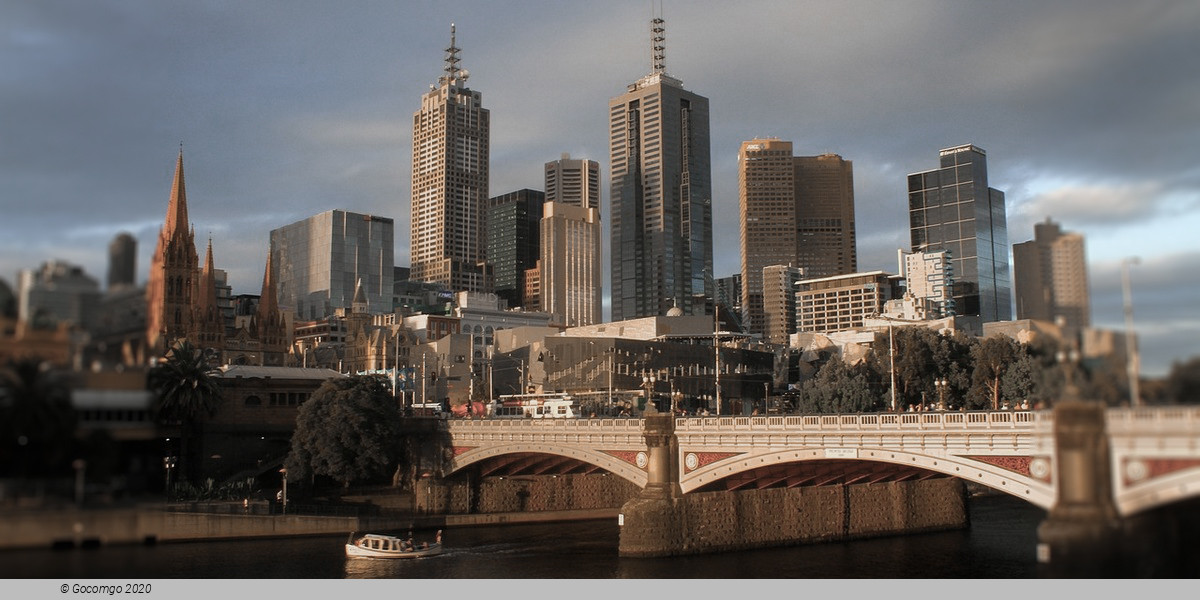Melbourne

Melbourne is the capital and most-populous city of the Australian state of Victoria, and the second-most populous city in Australia and Oceania. Melbourne is home of many of Australia's best-known landmarks, such as the Melbourne Cricket Ground, the National Gallery of Victoria and the World Heritage-listed Royal Exhibition Building.
Noted for its cultural heritage, the city gave rise to Australian rules football, Australian impressionism and Australian cinema, and has more recently been recognised as a UNESCO City of Literature and a global centre for street art, live music and theatre. It hosts major annual international events, such as the Australian Grand Prix and the Australian Open, and also hosted the 1956 Summer Olympics. Melbourne consistently ranked as the world's most liveable city for much of the 2010s.
Often referred to as Australia's cultural capital, Melbourne is recognised globally as a centre of sport, music, theatre, comedy, art, literature, film and television. For much of the 2010s, it held the top position in The Economist Intelligence Unit's list of the world's most liveable cities, partly due to its cultural attributes.
The city celebrates a wide variety of annual cultural events and festivals of all types, including the Melbourne International Arts Festival, Melbourne International Comedy Festival, Melbourne Fringe Festival and Moomba, Australia's largest free community festival.
Ray Lawler's play Summer of the Seventeenth Doll is set in Carlton and debuted in 1955, the same year that Edna Everage, Barry Humphries' Moonee Ponds housewife character, first appeared on stage, both sparking international interest in Australian theatre. Melbourne's East End Theatre District is known for its Victorian era theatres, such as the Athenaeum, Her Majesty's and the Princess, as well as the Forum and the Regent. Other heritage-listed theatres include the art deco landmarks The Capitol and St Kilda's Palais Theatre, Australia's largest seated theatre with a capacity of 3,000 people. The Arts Precinct in Southbank is home to Arts Centre Melbourne (which includes the State Theatre and Hamer Hall), as well as the Melbourne Recital Centre and Southbank Theatre, home of the Melbourne Theatre Company, Australia's oldest professional theatre company. The Australian Ballet, Opera Australia and Melbourne Symphony Orchestra are also based in the precinct.
Melbourne has been called "the live music capital of the world"; one study found it has more music venues per capita than any other world city sampled, with 17.5 million patron visits to 553 venues in 2016. The Sidney Myer Music Bowl in Kings Domain hosted the largest crowd ever for a music concert in Australia when an estimated 200,000 attendees saw Melbourne band The Seekers in 1967. Airing between 1974 and 1987, Melbourne's Countdown helped launch the careers of AC/DC, Men at Work and Kylie Minogue, among other local acts. Several distinct post-punk scenes flourished in Melbourne during the late 1970s and early 1980s, including the Little Band scene and St Kilda's Crystal Ballroom scene, which gave rise to Dead Can Dance and Nick Cave and the Bad Seeds. More recent independent acts from Melbourne to achieve global recognition include The Avalanches, Gotye and King Gizzard and the Lizard Wizard. Melbourne is also regarded as a centre of EDM, and lends its name to the Melbourne Bounce genre and the Melbourne Shuffle dance style, both of which emerged from the city's underground rave scene.
Established in 1861, the National Gallery of Victoria is Australia's oldest and largest art museum, and houses its collection across two sites: NGV International on St Kilda Road and NGV Australia at Federation Square. Several art movements originated in Melbourne, most famously the Heidelberg School of impressionists, named after a suburb where they camped to paint en plein air in the 1880s. The Australian tonalists followed in the 1910s, some of whom went on to found Montsalvat in Eltham, Australia's oldest surviving art colony. During World War II, the Angry Penguins, a group of avant-garde artists, convened at a Bulleen dairy farm, now the Heide Museum of Modern Art. The city is also home to the Australian Centre for Contemporary Art, as well as numerous independent galleries and artist-run spaces. In the 2000s, Melbourne street art became globally renowned and a major tourist drawcard, with "laneway galleries" such as Hosier Lane attracting more Instagram hashtags than some of the city's traditional attractions, such as the Melbourne Zoo. Melbourne is also home to many examples of public art, ranging from the Burke and Wills monument (1865) to the abstract sculpture Vault (1978).

